On April 18…
“A soldier who has been a long time in the line does have a ‘look’ in his eyes that anyone who knows about it can discern. It’s a look that is the display room for what lies behind it – exhaustion, lack of sleep, tension for too long, weariness that is too great, fear beyond fear, misery to the point of numbness, a look of surpassing indifference to anything anybody can do. “
~Ernie Pyle
World War II Correspondent
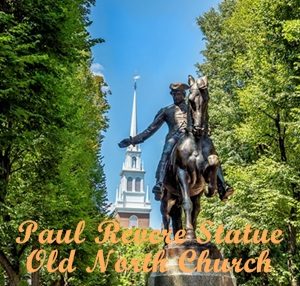
1775 – British troops marched out of Boston on a mission to confiscate the American arsenal at Concord and to capture patriot leaders Samuel Adams and John Hancock, known to be hiding at Lexington.
As the British departed, Boston patriots Paul Revere and William Dawes set out on horseback from the city to warn Adams and Hancock and to rouse the Minutemen.
They took separate routes in case one of them was captured: Dawes left the city via the Boston Neck peninsula and Revere crossed the Charles River to Charlestown by boat. As the two couriers made their way, guards in Charlestown waited for a signal from Boston informing them of the British troop movement.
As previously agreed, one lantern would be hung in the steeple of Boston’s Old North Church, the highest point in the city, if the British were marching out of the city by Boston Neck, and two lanterns would be hung if they were crossing the Charles River to Cambridge.
Two lanterns were hung and the armed Minutemen set out for Lexington and Concord accordingly. Along the way, Revere and Dawes roused hundreds more, who armed themselves and set out to oppose the British.
Forget the myth you were taught: Revere did not shout the phrase later attributed to him (“The British are coming!”). His mission depended on secrecy, the countryside was filled with British army patrols, and most of the Massachusetts colonists (who were predominantly English in ethnic origin) still considered themselves British.
Revere’s actual warning, according to eyewitness accounts of the ride and Revere’s own descriptions, was “The Regulars are coming out!“
Revere arrived in Lexington shortly before Dawes, but together they warned Adams and Hancock and then set out for Concord. Along the way, they were joined by Samuel Prescott, a young patriot who had been riding home after visiting a friend.
The story continues tomorrow.

1906 – At 5:13 a.m., an earthquake estimated at close to 8.0 on the Richter scale struck San Francisco, California, killing hundreds of people as it toppled numerous buildings.
The quake was caused by a slip of the San Andreas Fault over a segment about 275 miles long, and shock waves could be felt from southern Oregon down to Los Angeles.
By April 23, most fires were extinguished, and authorities commenced the task of rebuilding the devastated metropolis.
375 deaths were reported; however, hundreds of fatalities in Chinatown went ignored and unrecorded. It is now estimated that up to 3000 deaths were caused directly or indirectly by the catastrophe.
Most of the deaths occurred in San Francisco itself, but nearby cities, such as Santa Rosa and San Jose, also suffered loss of life and severe damage. In Monterey County, the earthquake permanently shifted the course of the Salinas River near its mouth. Almost 30,000 buildings were destroyed, including most of the city’s homes and nearly all the central business district.
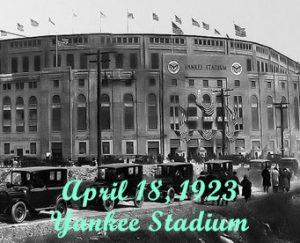
1923 – Yankee Stadium opened with the Yankees hosting the Boston Red Sox.
New York defeated the Sox by a score of 4–1, with Babe Ruth hitting a three-run home run into the right-field stands.

1939 – Gene Autry recorded Back In The Saddle Again in Los Angeles for Columbia Record Corporation.
The song was used as a production piece in Autry’s Rovin’ Tumbleweeds film.
Autry later introduced it as his theme song for Gene Autry’s Melody Ranch which premiered over the CBS Radio Network on January 7, 1940 where the show ran until 1956.
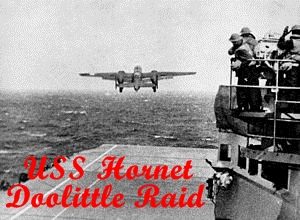
1942 – Commanded by Lieutenant Colonel James H. Doolittle, sixteen American B-25 bombers – each with a crew of five men – launched from the aircraft carrier USS Hornet 650 miles east of Japan and attacked the Japanese mainland.
The now-famous Tokyo Raid did little real damage to Japan but it did hurt the Japanese government’s prestige and created doubt in Japan on the ability of its military leaders to defend their home islands.
Believing the air raid had been launched from Midway Island, approval was given to Admiral Isoroku Yamamoto’s plans for an attack on Midway – an attack that turned into a decisive strategic defeat of the Imperial Japanese Navy by the U.S. Navy in the Battle of Midway.
Doolittle was promoted two grades to brigadier general, skipping the rank of colonel, and was awarded the Medal of Honor.
All 80 Raiders were awarded the Distinguished Flying Cross, and those who were killed or wounded during the raid were awarded the Purple Heart.
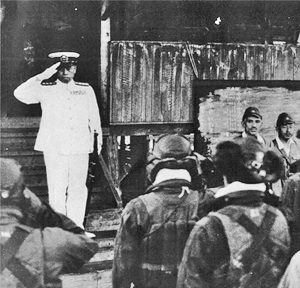
1943 – In Operation Vengeance, Admiral Isoroku Yamamoto, commander-in-chief of the Imperial Japanese Navy and mastermind behind the Pearl Harbor attack on December 7, 1941, was killed.
U.S. naval intelligence effort code-named “Magic” had intercepted and decrypted Japanese orders that revealed Yamamoto would be flying to Balalae Airfield on an island near Bougainville in the Solomon Islands.
A squadron of sixteen U.S. Army Air Force P-38G fighter planes from Kukum Field on Guadalcanal ambushed him on Bougainville Island when his transport bomber aircraft was shot down.
The photo above is the last known image of Yamamoto, saluting Japanese pilots just moments before he boarded his aircraft and was blown out of the sky.
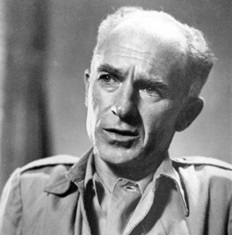
1945 – Pulitzer Prize-winning war correspondent Ernie Pyle was killed by Japanese machine-gun fire on the island of Ie Shima off the coast of Okinawa.
Extremely popular, especially with the average GI, whose life and death he reported on, Pyle had been at the London Blitz of 1941 and saw action in North Africa, Italy, France, and the Pacific.
A monument exists to him to this day on Ie Shima, describing him simply as “a buddy.”

1955 – Albert Einstein died at the age of 76.
A German-born theoretical physicist – and winner of the 1921 Nobel Prize in Physics – he developed the theory of relativity, one of the two pillars of modern physics, alongside quantum mechanics.
Einstein had experienced internal bleeding caused by the rupture of an abdominal aortic aneurysm. He refused surgery, saying, “I want to go when I want. It is tasteless to prolong life artificially. I have done my share. It is time to go. I will do it elegantly.”

1956 – Academy Award winning actress Grace Kelly married Prince Rainier in a civil ceremony inside the throne room in the Palace of Monaco, followed by a larger religious wedding the next day.
To cap the ceremony, the 142 official titles that she acquired in the marriage (counterparts of her husband’s) were formally recited … every single one of them.

1969 – The Beatles recorded George Harrison’s Old Brown Shoe. Actually it was almost entirely a Harrison recording.
Rock Factoid: Ringo Starr was filming The Magic Christian with Peter Sellers and was unavailable for the session. In his place, the drums were played by Paul McCartney, who also added harmony vocals with John Lennon.
The rest was all George, who played lead and rhythm guitars, bass guitar, Hammond organ and piano.
The song was released as a single in May 1969, as the B-side to The Ballad of John and Yoko.
Missing In Action: Because Harrison and Starr did not appear on the A-side, the release of the single was the only time Ringo Starr did not appear on either side of a Beatles 45.

1983 – The U.S. embassy in Beirut, Lebanon, was destroyed by a car-bomb explosion that killed 63 people, including the suicide bomber and 17 Americans.
The terrorist attack was carried out in protest of the U.S. military presence in Lebanon.
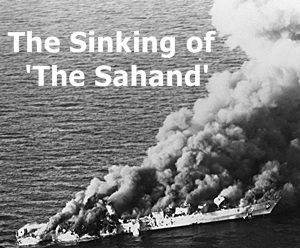
1996 – Operation Praying Mantis began.
U.S. forces within Iranian territorial waters struck in retaliation for the Iranian mining of the Persian Gulf during the Iran–Iraq War, and the subsequent damage to guided missile frigate USS Samuel B. Roberts, an American warship.
In the retaliatory attack, Iranian frigates Sahand and Joshan were sunk and another, the Sabalan, was heavily damaged.
Operation Praying Mantis helped pressure Iran to agree to a ceasefire with Iraq later that summer, ending the eight-year conflict between the Persian Gulf neighbors.

2012 – Dick Clark, TV personality and producer best known for hosting American Bandstand, died of a heart attack at the age of 82 in Santa Monica, CA.
The youthful-looking Clark, dubbed “America’s Oldest Teenager,” also was the longtime host of the annual New Year’s Rockin’ Eve and headed an entertainment empire that developed game shows, awards shows, talk shows, made-for-TV movies and other programs.

2015 – It was quite a night at the Rock & Roll Hall of Fame.
Ringo Starr, Stevie Ray Vaughan & Double Trouble, Joan Jett & the Blackhearts, Green Day, Bill Withers, Lou Reed, the Paul Butterfield Blues Band, and the “5” Royales, were all inducted.
Compiled by Ray Lemire ©2020 RayLemire.com / Streamingoldies.com. All Rights Reserved.